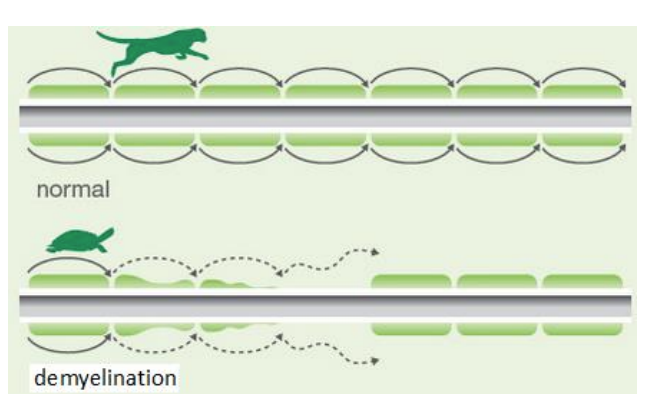Electrical signaling in neurons
1/11
There's no tags or description
Looks like no tags are added yet.
Name | Mastery | Learn | Test | Matching | Spaced |
|---|
No study sessions yet.
12 Terms
Cell membrane
is polarized = electrical difference across the membrane
inside of the neuron more negative than the outside - when neuron is at rest (i.e. not carrying a signal)
contains ion channels
important channels: potassium (K+ ), sodium (Na+ ), calcium (Ca2+), chloride (Cl- )
channels can open & close
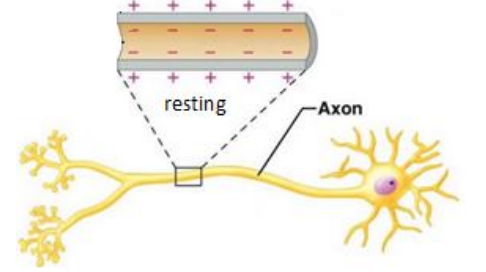
Resting membrane potential
= when neuron is not sending a signal
membrane potential is about -70 millivolts
Membrane potential is maintained by K+ & Na+ pumps
membrane is leaky to K+ via channels that are always open, K+ diffuses out
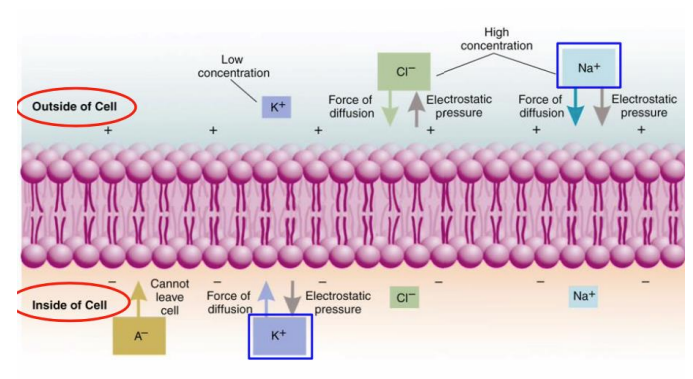
Signal transfer along axon via APs
• Dendrites receive signals from previous neurons
→ changes the potential of the cell membrane at the target cell
→ this will generate an Action Potential at the point where axon leaves the cell body (Axon hillock)
→ Action Potential spreads along the Axon to axon terminals
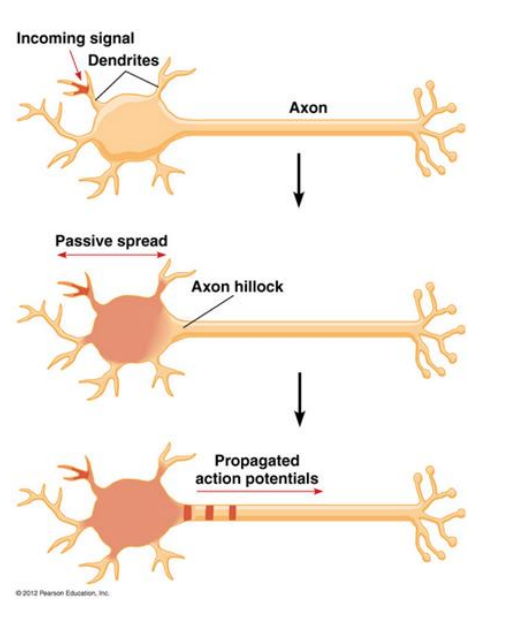
Action potential (AP)/Nerve impulse
‘all or nothing’ response - either occurs or doesn’t
size is always the same
spreads along the axon to the axon terminals
starts at the axon hillock of the axon
2 phases: depolarisation, repolarisation
to be triggered, cell must be depolarised to -55mV (threshold)

Depolarisation
inside of cell becomes more positive
sodium/Na+ channels open → positive sodium ions flow into the cell
the massive influx changes membrane potential, i.e. becomes positive at that area where sodium enters the cell
when sodium ions are more or less equal at each side of the membrane, Na+ channels close - sodium influx stops
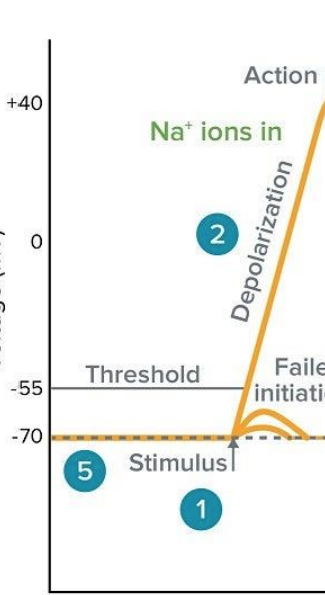
Repolarisation
inside of cell becomes more negative
while Na+ channels close, potassium/K+ channels open
positive ions rush out of the cell
→ inside of the cell becomes negative again
once K+ ions are more or less the same inside & outside the cell, K+ channels close
→ membrane potential even more negative than when it is at rest (Hyperpolarization)
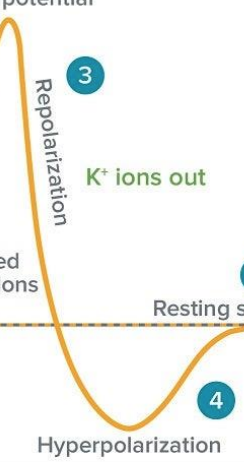
Sodium-potassium pump
used to reestablish resting potential of -70mV
each cycle transfer 3 Na+ out of cell and 2 K+ into cell
restores balance of ions present at resting potential
Outside cell: high Na+
Inside cell: high K
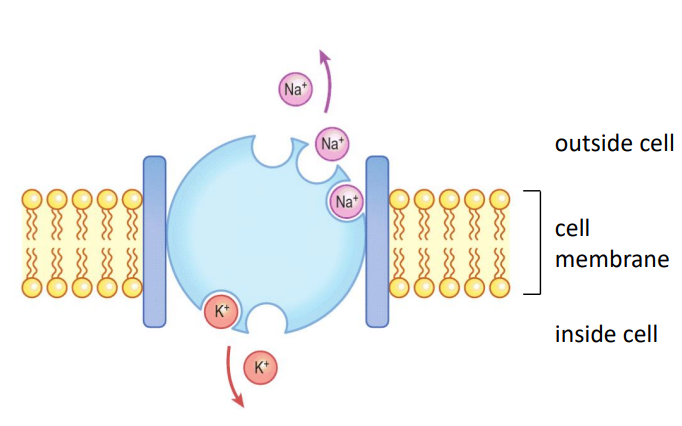
Propagation AP
Influx of positive sodium/Na+ ions depolarizes the membrane at this region
these Na+ ions will diffuse to the neighboring areas triggering APs down the axon
→ causing depolarization of the membrane ahead of the AP
→ causes Na+ channels along this part of the membrane to open
→ again Na+ ions rush in & another AP occurs (De- & Repolarization)
→ Na+ ions diffuse to neighboring areas …

Refractory period
Once an AP has occurred, a 2nd AP can’t occur until the membrane has recovered
2 phases:
Absolute period
not possible to trigger another AP
Relative period
AP can be generated by needs to be a stronger stimulus
→ AP propagates forward
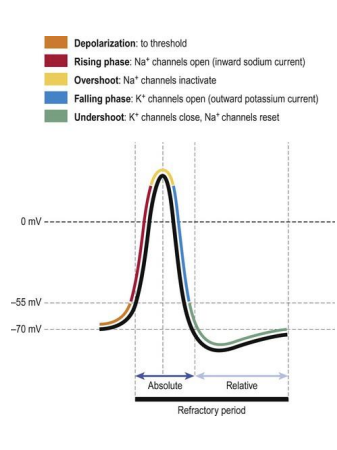
Unmyelinated axons
continuous impulse propagation = voltage changes along the whole axon membrane
passive depolarisation spreads
time consuming
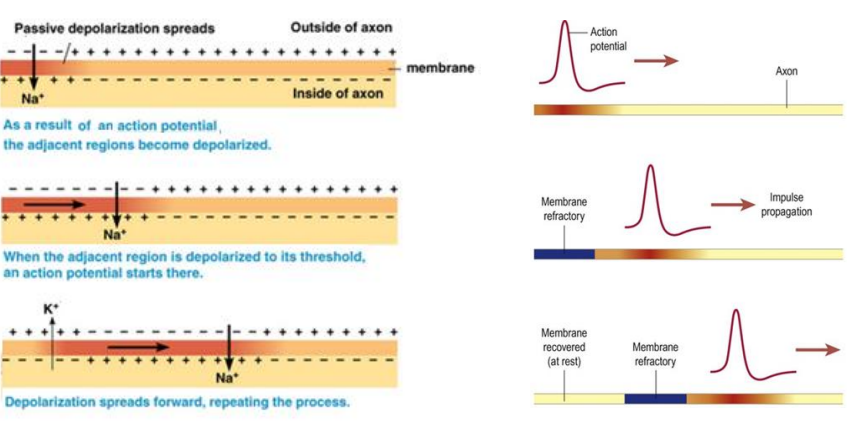
Myelinated axons
Saltatory conduction
APs only generated at nodes of Ranvier (unmyelinated)
ions can pass the membrane
Sodium rushes into the cell → positivity diffuses along the axon to next node → causes depolarization there, etc.
AP jumps from node to node
→ impulse transfer significantly faster
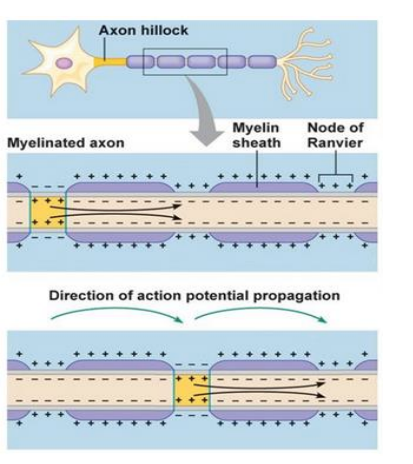
Application to Multiple Sclerosis (MS)
demyelinating disease = loss of myelin
loss of Saltatory conduction
signal transfer significantly slower
